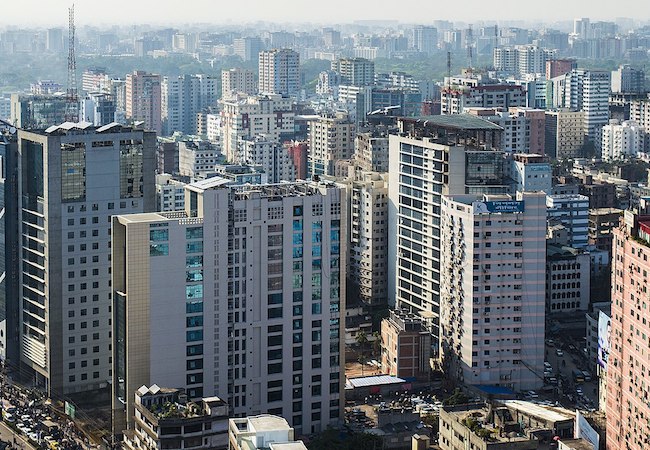
By Sajeeb Wazed
Experts confirm what Bangladeshis have long known: people are not responsible for their poverty. Lack of resources, not lack of will or talent, prevent the poor from improving their circumstances. In Bangladesh, as elsewhere, the very poor get caught in a self-perpetuating cycle.
But that can change and, in Bangladesh, it has. The South Asian nation is lifting vulnerable populations from their poverty trap.
One of its most effective actions has been to provide housing. To deal with this need, Bangladesh in 1997 established the Ashrayan Project, which built homes for homeless and displaced people. The project has handed overhomes to more than 150,000 families, including 30,000 homes by the end of this year.
Under the initiative, the government also builds roads, delivers drinking water, and provides health education and family planning. It trains people to farm, manage livestock, and gain digital proficiency. More than 298,000 families have received assistance through the Ashrayan Project through the years.
The Ashrayan Project has changed millions of lives. One of its significant achievements has been to help the country break from the male-dominated traditions of the past. Women now have the same property rights as men. Ashrayan resources, including land, are jointly owned by husband and wife. Thanks to these property rights, women have been able to attain economic security and independence.
The empowerment of women is crucial to Bangladesh’s emergence as a vibrant, modern nation. According to the World Economic Forum’s Gender Gap Index 2021, Bangladesh has made major progress narrowing gender disparities. While much work remains to be done, Bangladeshi women enjoy greater economic opportunity than ever. Bangladesh continues to grow both economically and socially in large part because of its commitment to improving the status of women.
Bangladesh’s poverty rate has dropped from 47.5 percent in 1996 to 20.5 percent in 2020. Its rate of extreme poverty, defined as living on less than $1.90 per person per day, has decreased from 19.3 percent in 2009 to 10.5 percent in 2020. The World Bank recently praised Bangladesh’s “remarkable progress in economic development,” and described it as a “model for poverty reduction.”
As poverty rates fell, Bangladesh continued its rapid economic growth. Between 2009 and 2020, Bangladesh’s Gross Domestic Product per capita rose from $710 to $2,064. HSBC Bank recently predicted that Bangladesh would be the 26th-largest economy in the world by 2030 due in large part to its sustained GDP growth of roughly 6 percent during the last twenty years.
To connect disparate rural regions, many of which are flourishing for the first time thanks to assistance provided through the Ashrayan project, Bangladesh is strengthening the nation’s physical infrastructure and online connectivity. The Padma Bridge, a mega-project connecting entire regions of the country and funded by the government, will open later this year. The bridge will boost Bangladesh’s GDP by an additional as much as 2 percentage points. To reduce traffic and improve commuting time, Bangladesh is also constructing a metro rail system in Dhaka, the capital, and several elevated expressways.
Economic diversification is also helping. Bangladesh is far more than a source of apparel and textiles. It also is a growing provider of backroom online services. Bangladesh’s per capita income has trebled in a single decade to $2,227 in fiscal 2021, which is higher than neighboring India and Pakistan. Bangladesh’s foreign currency reserves have reached an all-time high of $48 billion. That’s a remarkable turnaround for a country once referred to in the West as a “basket case.”
In fact, Bangladesh has gone from being one of the poorest nations to achieving lower-middle-income-country status this year. It is on track to graduate from the United Nations’ list of least developed countries by 2026.
The real results are not so abstract. Take the example of Aleya Begum. For thirty years, Aleya and her family lived in squalor beside a canal-turned-trash dump. Her tattered clothes were a testimony to her life of poverty. Aleya’s eight sons and one daughter perished when their precariously balanced wooden shelter crumbled into the canal. Soon after the incident, Aleya’s husband left her. She was alone, penniless, and without shelter.
But she was selected to receive a home under the Ashrayan project and the course of her life changed. Housed and fed, Aleya was no longer at risk of starving or becoming a victim of forced labor. Instead, she is free to learn one of the many trades taught to beneficiaries of the Ashrayan project and earn a stable income for the first time.
This is a story repeated many times in Bangladesh and can be repeated in other countries as well.
Sajeeb Wazed is the Bangladesh government’s Information and Communication Technology adviser.




